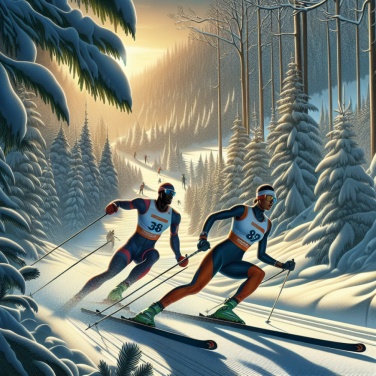Deciphering Caid's Impact: How Early Ball Games Shaped Modern Sports Culture
The traditional Irish game of Caid has deep roots in the cultural heritage of Ireland and beyond, serving as a precursor to modern sports such as football, soccer, and rugby. Its impact on the development of contemporary sports culture can be observed through various elements, from gameplay and training to social gatherings and community identity.
One of the critical ways in which early ball games like Caid have influenced modern sports is through the evolution of game rules and regulations. Caid was characterized by its lack of formalized rules, which varied from parish to parish, but the essence of the game—kicking or hitting a ball towards a designated target area—remained consistent. As Caid transitioned into more structured sports, the necessity for standardized rules became evident, leading to the establishment of governing bodies such as the Gaelic Athletic Association (GAA) in 1884. This move towards codification has underpinned the development of competitive sports and the notion of fair play that is central to sporting events today.
Training techniques and physical preparation, which are paramount in the world of modern sports, have their genesis in the rudimentary practices of Caid players. The physicality and endurance required to play Caid contributed to the formulation of specific training methods aimed at enhancing players' strength, agility, and stamina. These methods informed the more sophisticated training regimens we observe today, emphasizing the importance of athletic prowess in achieving success on the field.
Moreover, the social aspect of early ball games has left a significant mark on present sports culture. Caid was not just a game; it was a communal event that brought together entire communities. From organizing matches and cheering for players to post-game festivities, Caid functioned as a social glue, reinforcing local identities and rivalries. Modern sports have inherited this tradition, turning athletic contests into events that foster camaraderie, regional pride, and even nationalism on a global scale.
The layout of sports fields and stadiums today can also be traced back to the informal playing spaces of Caid. Early ball games were often played in open fields with flexible boundaries, which paved the way for the concept of dedicated sports grounds. The design of these spaces has evolved to enhance the spectator experience—elevating the spectating aspect of sports from mere attendance to an integral part of the cultural experience.
Caid's role in the creation of fan culture is undeniable. The passionate support seen in contemporary sports has its origins in the local leanings and partisanship of ancient ball games.
Read also:
Champions Enter the NFT Arena: Athlete-Backed Tokens
Unveiling the Ancestral Roots of Caid: A Journey into Medieval Sporting Traditions
Unveiling the Ancestral Roots of Caid: A Journey into Medieval Sporting Traditions
The historical significance of Caid, an ancient ball game, is a relatively unexplored topic in mainstream historical discourse, yet it commands an essential part of our medieval cultural tapestry. This traditional game, which possesses deep historical roots, serves as a precursor to many modern sports, and its exploration reveals a rich narrative of community, competition, and continuity within changing societies.
Caid was primarily played in Ireland and has been recorded in historical texts going back to the 14th century, but its origin might be even older. It was a team sport that is considered an ancestor of modern Gaelic football. Caid, which roughly translates to "the ball" in Irish, was not merely a game; it was an event that could bring entire communities together. The matches were often played at significant gatherings like fairs, festivals, and after religious ceremonies, illustrating the game's social and ceremonial importance.
The rules of Caid were not formally written but passed down orally, varying from region to region. A common feature, though, was the lack of an established pitch size, goalposts, or a set number of players, leading to matches that were chaotic, energetic, and expansive, occasionally encompassing whole village areas. Players would often aim to pass the ball over a predetermined mark or between two landmarks that acted as goalposts, with the objective to maintain possession and outmaneuver the opposing team.
Examining surviving texts and accounts of Caid, historians and sports enthusiasts are able to glimpse into the past and see how medieval life was deeply intertwined with physical competition. The game required agility, strength, and teamwork, making it a prime venue for displaying athleticism and local prowess. Notably, Caid emphasized community involvement over professional competition, distinguishing it from the commercialized sports culture of today.
Furthermore, Caid was not just a test of physical ability; it reinforced social bonds and local identities. The game was an outlet that enabled communities to express rivalries and solidarity in a setting that was aggressive in play but convivial in spirit. The significance of these gatherings for playing Caid went beyond entertainment; they functioned as opportunities for reinforcing community values and shared history, with the sport itself acting as a vessel for oral traditions and folklore.
The remarkable game of Caid, with its origins steeped in Irish history, serves not only as a recreational activity but also as a vessel carrying the legacy of Ireland's rich sporting culture. Dating back to the 16th century, Caid, which roughly translates to "the ball" in Irish, was not merely a game but a test of might, agility, and social cohesion.
Caid's Historical Roots
The earliest references to Caid trace back to the Gaelic term "cat" or "caidhp," pointing to a military exercise among warriors that soon became a popular sport among the masses. It was a pastime that cut across class and status, uniting communities in their love for this spirited competition. The game was often played on religious holidays, reflecting the importance of such events in the community calendar and the intertwining of spirituality and physicality in ancient Gaelic society.
The Evolution of the Game
Caid was typically played with a ball made of animal hide, stuffed with hair or feathers. The aim was straightforward - teams had to pass the ball over a designated goal line, showcasing similarities to present-day rugby. While there were no formal rules, it was understood that players would exhibit physical prowess during the game. Interestingly, the dimensions of the playing field were not fixed, leading to matches taking place over large expanses of land, which sometimes involved entire villages and could last for days.
The Social Impact of Caid
Caid served multiple functions within Irish society. Beyond recreation, it was a venue for displaying physical strength, an essential trait in both everyday life and warfare. Displaying skill in Caid was a matter of personal and familial honor, enhancing social status and pride within the community.
Moreover, the game played a crucial role in social unity. Although physical confrontations were common, the overarching ethos was the community gathering as one. In a way, Caid mirrored the societal structure of Ireland at the time, synthesizing the individual's need for recognition with the community's need for cohesion.
Modern-Day Reflections
The game of Caid is a precursor to modern sports such as Gaelic football and hurling, which are integral to contemporary Irish culture. These sports maintain elements of Caid, such as the community spirit and physical agility required of the players. As a historical antecedent, Caid provides a clear line of cultural continuity, revealing how sport has always been an essential part of Ireland's social fabric.




